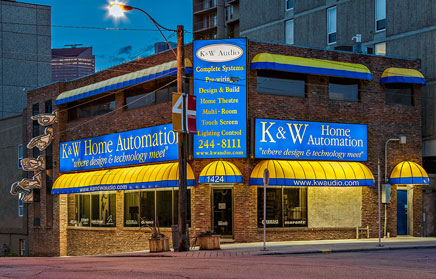TIP# 37:
The next big change in Television is… High Definition: flat hang it on the wall monitors in the new movie screen aspect ratio, in Digital with Dolby Digital surround. If you have talked to anyone who has even a bit of information on what is happening in the TV world, you probably have heard that it is high on the list of latest things, and is only weeks away. Well, if they told you Colour, you have a very good memory. All of the other things are coming, and we thought a short explanation, might help you understand some of the new TV technologies, now literally just around the corner.
A brief overview of High Definition Television or HDTV is a difficult one to tackle, but we will try to hit the highlights. HDTV is a concept, not a single unified process. The various political and sanctioning bodies have set out the basic parameters for a new broadcast forrnat that will, in any one of the possible permutations, simply blow away what you are watching now. However, it looks as though there will be several formats in the beginning, but unlike a Beta vs VHS struggle, the correct set of connectors will be on the back of your set. This means that you will be able to watch any one of them, to the best capabilities of your display. Some of the television programs you are watching now are already recorded in HDTV fortnat, compatible with our existing broadcast standard. This will allow high resolution reruns, as soon as a delivery system is set up near you.
All the standards will incorporate a 16:9 aspect ratio, or letterbox shape if you will. This dictates a change in the basic dimensions of a HDTV set. The viewing area will look more like a movie screen which will make late night re runs of movies like Gone With theWind take on a new feel on the home TV set. Yes, older broadcasts will still be viewable in the new format, but you are always going to be limited in resolution by the original recording technique. Of course, watching Will Shatner fighting Klingons will now have black bars on either side of the screen, the opposite of what happens now with letterbox video presentations.
The audio standard for the brave new world of Television will be Dolby Digital 5.1, or better known as AC-3. Currently only available on DVD, and select channels off satellite, this format offers pure digital feed, for almost non existent signal loss with tremendous quality and clarity. It also offers a path for upgrade ability in the future, with no need to change the sending end.
Digital Cable is an interesting area. Bandwidth equals either quality or quantity, take your pick. “Delivering” in the digital domain will require each cable company to choose whether to give you the choice of a bazillion channels at less than state of the art resolution, or a more limited selection with the absolute finest picture and sound performance level possible. Which way any given provider will go is anyone’s guess, but most seem to lean toward quantity. The fact that a given program is distributed digitally as opposed to analog does not necessarily mean that the picture or sound quality will be better. Many other factors come into play, such as the original program’s recording and format, the quality of the cable company’s delivery system and of course the quality of the receiver’s decoder and display. All these factors have a role in determining the performance of any digital, of analog program.
How does all this affect what is currently available in TV sets, and what is coming? Well, the flat, hang on it the wall TV is here already. The first manufacturer to actually make units available in Canada is Fujitsu. Their 16:9 HDTV ready 42″ plasma screen TV is 6 inches thick, and a comparatively cheap $18,000. Once you get up, let me explain that the reason it is available here is that its rivals, and there are about a half dozen, all sell their sets for at least ten grand more. No doubt one day they will be cheaper, but state of the art will always come at a premium.
Rear projection sets, in the 40″ to 70″ ranges are already available in the 16:9 ratio, with the ability to accept HDTV decoded signals, and they are much more affordable. They’re priced in the $3,000 to $10,000 range and that is affordable to the enthusiast. Until a wide variety of programs are available I don’t see all manufacturers abandoning the conventional 4:3 TV for the 16:9 HDTV ready, but that too is not a long way off.
In the US, the government is giving free licensees for bandwidth in HDTV to cable companies, and charging a hefty penalty if they refuse. So the impetus is there to get the HDTV broadcast thing happening. They have also issued a guideline which states that all delivery companies must be running by 2006, and may also mandate turning off analog broadcast at that time too. We, as you may have noticed, are not the US, but we do tend to follow their lead.
So, a well educated guess is that with the evolution to the HDTV format, ten years from now, you will have to have a new set. It will be 16:9 and its resolution will depend on your provider. If you buy a 4:3 quality TV tomorrow, ten years from now you will probably need a set top converter to convert the signal to be able to watch the picture, but it would still work. However, if you buy a 16:9 HDTV ready set today, you are on the leading edge of technology, and would watch the broadcast industry catch up to you over the next few years. A win, win situation no matter what your decision. For current 16:9 HDTV owners, Jay Leno starts his 16:9 HDTV broadcasts in April of next year… and he won’t be the first. – Happy viewing!


